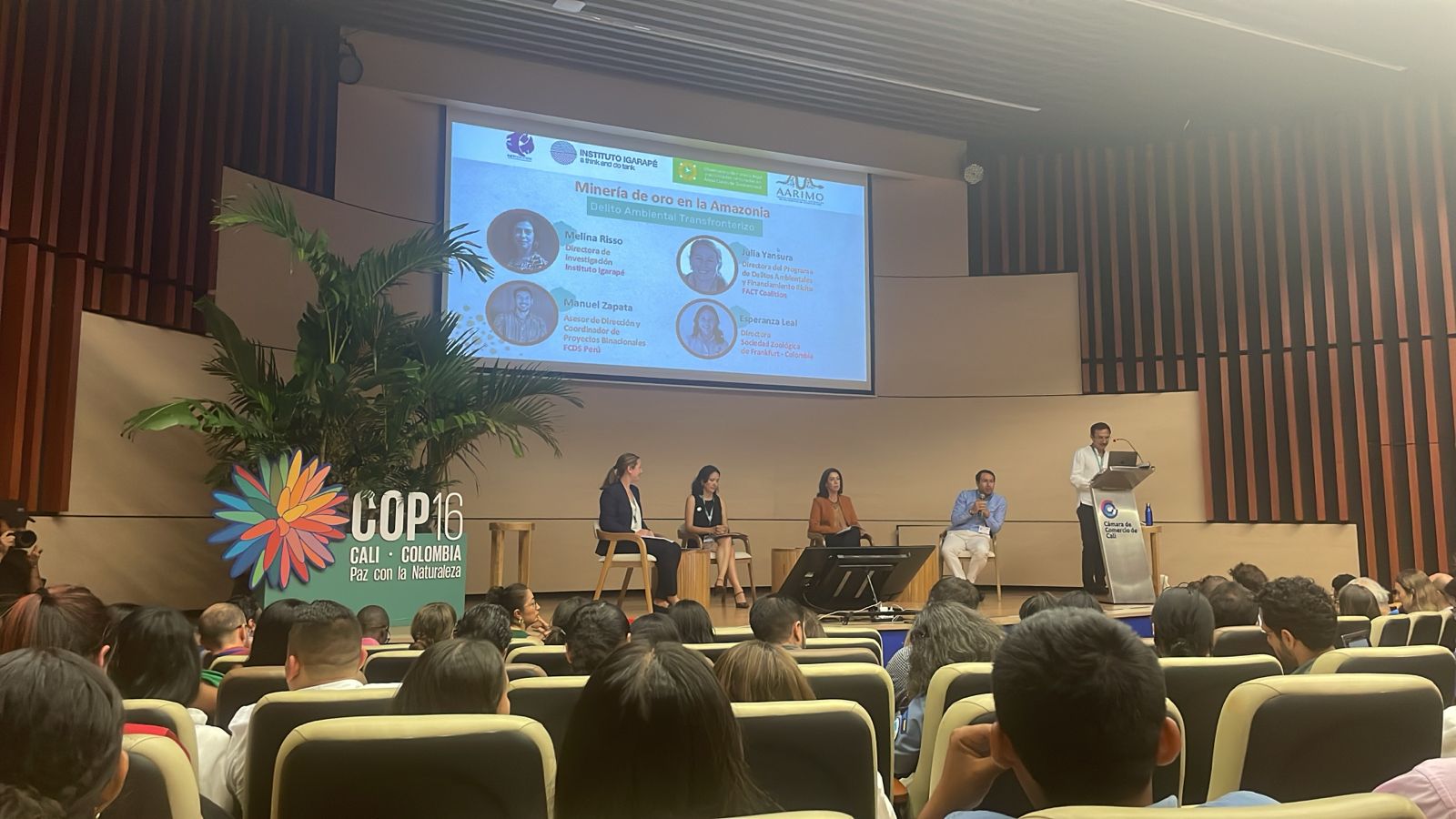This blog was originally published by the Washington Brazil Office, an independent institution focused on strengthening the role of civil society and institutions dedicated to the promotion and defense of democracy, human rights, freedoms, and sustainable socioeconomic and environmental development in Brazil.
Last week, representatives from countries around the world gathered at the COP16 Biodiversity Conference in Cali, Colombia to discuss national commitments to protect biodiversity at a time when up to 1 million species are at risk of extinction.
Of course, environmental crime falls squarely within the agenda of COP16. We know that illegal logging, mining, and trafficking of wild flora and fauna constitute major threats to biodiversity. This occurs through direct threats, such as trafficking of endangered species that removes them from their habitats and puts their immediate survival at risk. It also occurs through indirect threats, such as mercury use in illegal mining, which poisons living organisms downstream, including dolphins and jaguars.
The FACT Coalition arrived at COP16 having just published new research on environmental crimes and the dirty money that fuels them. FACT analyzed 230 environmental crimes over the past ten years and found that the United States is the single most common foreign jurisdiction in environmental crimes committed in countries in the Amazon region, serving as a destination for illegally-sourced natural resources as well as the proceeds from their sale. In these cases, illicit proceeds are often laundered through anonymous shell companies. Moreover, FACT found that environmental crimes frequently overlap with other crimes like corruption and terrorism financing, a phenomenon known as “crime convergence.”
Like FACT, many organizations arrived at COP16 with new research, cases, and resources to share. Following two weeks of intense discussion, debate and exchange of ideas, these are some of the key takeaways pertaining to environmental crime:
- There is widespread agreement that we need to “follow the money,” but also concerns about how to effectively put this into practice. “Efforts to combat illicit finance related to other illegal economies, such as drug trafficking, yielded underwhelming results,” María Victoria Llorente, the director of one of Colombia’s leading think tanks, told me at COP16. “How can we ensure that we do better with environmental crime?” It’s a challenging question, but certainly, part of the answer lies in raising awareness among the financial sector. For example, the World Wildlife Federation launched a new toolkit at COP16 that helps financial institutions to understand and mitigate risks associated with environmental crimes. Another part of the solution lies in strengthening government responses. At a COP16 event, a government official with Colombia’s Financial Intelligence Unit explained that Colombia has recently implemented administrative changes to the way financial intelligence is sent to the Attorney General’s Office. Now, cases are referred not only to the Environmental Prosecutor’s Office, but also to the Anti-Money Laundering Prosecutor’s Office in an effort to ensure parallel financial investigations.
- If recovered, the proceeds of environmental crime could help finance efforts to protect biodiversity going forward. The proceeds of environmental crimes are estimated to total as much as US$281 billion a year. According to Gastón Schulmeister from the Organization of American States, given the scale of these illicit economies, “countries should consider how recovering assets from environmental crime could help meet funding needs associated with COP16 and efforts to protect biodiversity.”
- Stronger collaboration is needed among countries to bring environmental criminals to justice. Research by FACT has found that many of these crimes are transnational in nature. However, countries are often fighting back alone. As Hanny Cueva Beteta, head of the Global Programme on Crimes that Affect the Environment at the UN Office on Drugs and Crime, commented at one COP16 event, “connecting law enforcement internationally is key.”
- There is growing recognition that the term “deforestation” is inadequate to describe the full range of harms caused by environmental crime. Illegal gold mining, arguably the most serious environmental crime in Latin America, causes devastating environmental damage but does not always result in deforestation, especially when mining occurs along rivers. Meanwhile, experts are pointing to the need to protect other ecosystems beyond tropical forests, such as wetlands, grasslands, and special alpine tundra known as páramos.
- Illegal gold remains a top concern. The Government of Colombia made traceability a high level priority for COP16 with the launch of the Global Commitment to an International Agreement on Mineral Supply Chain Traceability on October 29. At the local level, Cali has led in creating a regional coalition of cities committed to addressing environmental crimes such as illegal gold mining. Meanwhile, civil society also expressed concern about illegal gold at dozens of COP16 events. FACT participated in an event with experts from Colombia, Peru and Brazil on illegal gold mining in the Amazon region, launching a new policy brief with seven policy recommendations to address the issue.

